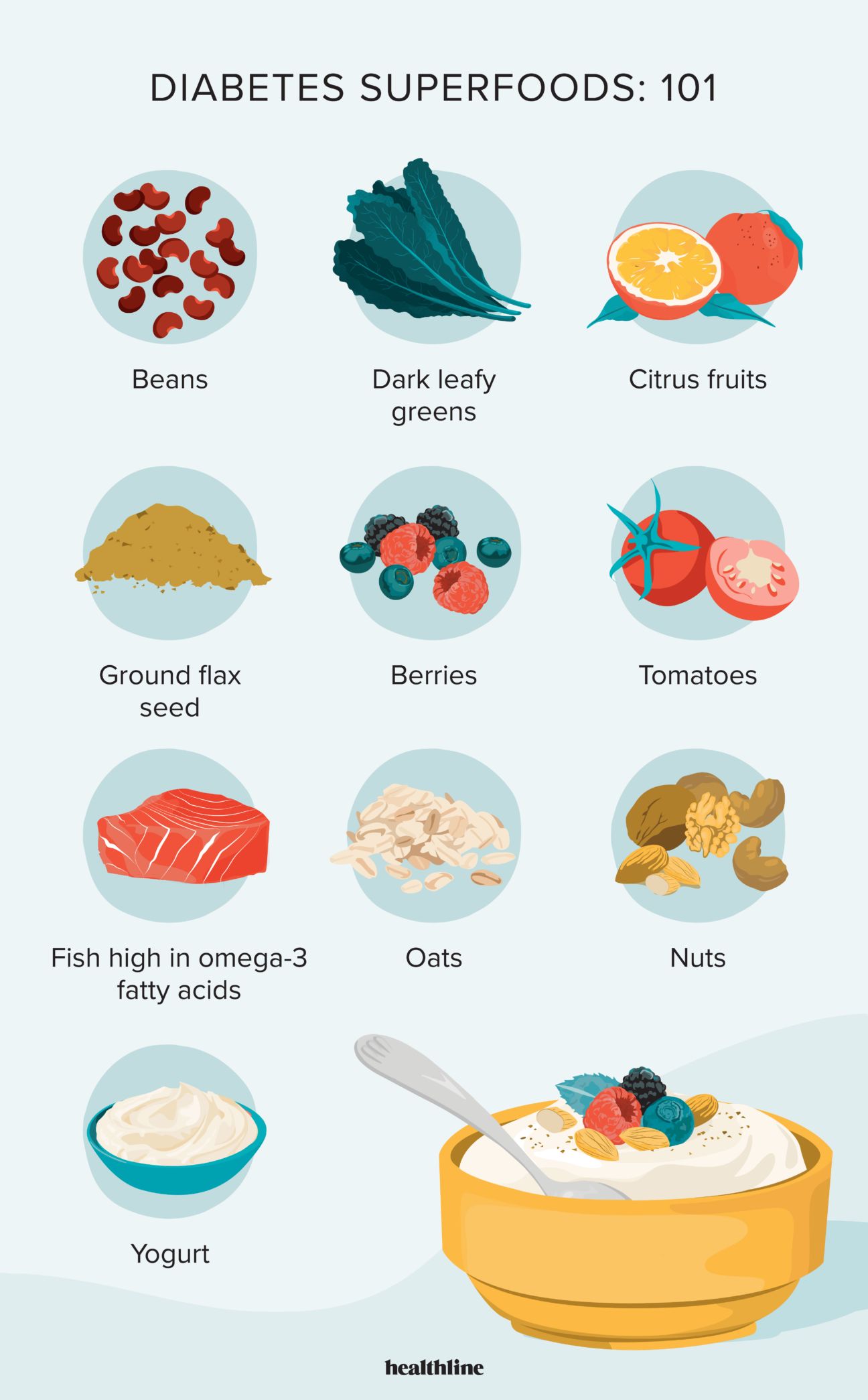You’ve probably heard the term more times than you can count: superfood. But what exactly does it mean? Simply put, a “superfood” is a food that’s packed with nutrients. There’s usually a high percentage of one or more nutrients that make a superfood “super,” like vitamin A or potassium.
When it comes to managing a chronic condition such as type 2 diabetes, making dietary changes can be important — including adding the right superfoods to your meals. Diabetes superfoods may help you manage your blood sugar and support heart health.
Here’s what you should know about diabetes superfoods and how to add them to your meal plan.
Type 2 diabetes is a chronic condition in which your body doesn’t produce enough (or any) insulin, or doesn’t properly use insulin to metabolize glucose, a sugar your body needs to fuel itself.
Research shows that in addition to genetics, factors such as diet and exercise habits may also contribute to the development of type 2 diabetes. Eating a well-balanced diet and exercising regularly may help you manage or reduce diabetes risk factors such as obesity, high cholesterol, and high blood pressure.
Enter: diabetes superfoods.
A food may be labeled a superfood for diabetes if it contains nutrients that help to manage blood sugar. Fiber and protein are good for that.
If you have diabetes, it’s also smart to follow a heart-healthy diet. Foods that contain fiber, healthy fats, and antioxidants may play a role in heart health. These foods can help lower cholesterol and blood pressure and keep your blood vessels healthy. Antioxidants and healthy fats can help to reduce inflammation in your body. Inflammation is a factor in heart disease.
Here are 10 so-called superfoods to introduce into your daily diet:
Beans are a great source of fiber, which can
Leafy greens, such as kale and spinach, are rich in antioxidants. Having leafy greens with a meal
Fruits such as oranges, grapefruits, clementines, and limes are rich in fiber and vitamin C, which is an
Ground flaxseed is a great source of healthy fats, fiber, and antioxidants. Flaxseed can help
Berries are high in antioxidants. Researchers have
Toss a handful of mixed berries into your morning oatmeal for added sweetness, or enjoy a parfait for dessert with berries, plain Greek yogurt, and a drizzle of honey.
Tomatoes are high in the antioxidant lycopene. Eating more tomatoes has been associated with a lower risk of heart disease. Add tomatoes to a salad, omelet, or scrambled eggs. For a quick and tasty dinner, stuff beefsteak tomatoes with brown rice and veggies, then roast them in the oven.
Salmon, anchovies, trout, and mackerel are some fatty fish high in omega-3, a type of healthy fat
Oats are high in soluble fiber, which
Nuts contain healthy fats, fiber, and protein. They’re good for filling you up while helping to keep your blood sugar steady. Swap croutons in your salad for nuts like walnuts or almonds. You could also incorporate nuts into sauces such as pine nut pesto.
Research
According to the American Diabetes Association, these foods are full of fiber, protein, and healthy fats (as well as vitamins and antioxidants) and low in simple sugars and saturated fats. They also have a low glycemic index, which is an important ranking of carbohydrate-containing foods based on the food’s effect on blood sugar.
But before you “superpower” your diet with an endless supply of these diabetes superfoods, it’s important to know this: Superfoods are also part myth.
While there are veggies and fruits that are incredibly nutritious, experts emphasize that no single food can prevent or reverse disease. And just like anything else, superfoods should be eaten in moderation and as part of a well-balanced diet and regular exercise regimen to get their full benefit.
“’Superfoods’ seem to have come into existence due to their high nutrient content of one particular nutrient,” said Puja Mistry, MS, RD, LD, the Houston regional dietitian at H-E-B Grocery Stores.
“For example, kale became a superfood due to its high vitamin K content. Acai and blueberries for their antioxidants, avocados for their healthy fats, and edamame for their protein. However, these foods alone cannot get the job done. They are excellent sources of what they provide, but they work best in combination with a variety of healthy foods. Basically, one food alone isn’t going to be a cure for anything.”
With that philosophy in mind, it’s relatively simple to incorporate superfoods into an overall meal plan that also includes fruits, vegetables, whole grains, and lean protein. If you’re unsure where to start, talk with your doctor or a registered dietitian for ideas.

